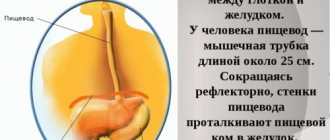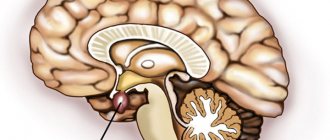The main causes of diseases of the cardiovascular system.
First of all, it is necessary to note excessive nervous tension (hypertension), which occurs in patients who have suffered severe mental trauma, or who have experienced strong and prolonged experiences. Secondly, I would like to note atherosclerosis, which causes coronary heart disease, as the cause of diseases of the cardiovascular system (the causes of atherosclerosis itself are not fully known, only predisposing factors). Also, the causes of diseases of the cardiovascular system include infections - this is, first of all, beta-hemolytic streptococcus of group A, which causes rheumatism, viridans streptococcus, enterococcus, Staphylococcus aureus, which causes septic endocarditis, myocarditis, pericarditis.
As a cause, it is necessary to highlight intrauterine development disorders, which result in the development of congenital heart defects (patent aortic duct, patent foramen ovale, and others).
The cause may also be trauma (acute blood loss), which results in acute cardiovascular failure. Some diseases can also be caused by other diseases of the cardiovascular system, for example, the development of chronic heart failure due to myocarditis, coronary heart disease.
In addition to the main reasons, there are many more factors due to which there is a predisposition to certain diseases of the cardiovascular system. This should include:
- hereditary predisposition (presence of the disease in close relatives),
- unhealthy lifestyle (smoking, alcohol, non-compliance with work and rest schedules, sedentary lifestyle),
- unhealthy diet (excessive consumption of foods containing animal fats, table salt),
- lipid metabolism disorders,
- changes in the functioning of the endocrine system (menopause),
- obesity,
- diseases of organs of other systems (cholelithiasis, hiatal hernia, stomach diseases, diabetes mellitus),
- harmful production factors (noise, vibration).
Methods for preventing circulatory diseases
Content
The most important task of modern medicine is the prevention of diseases of the circulatory system. After all, these diseases rank first in terms of disability and death. A variety of factors influence people’s health, and therefore problems with the circulatory system. These factors include bad habits, poor lifestyle, difficult living conditions, etc. All these causes of circulatory diseases are quite common, so preventing this pathology is of serious importance for all people.
*Some drugs may increase the risk of heart attack and stroke
According to a recent study (March 2011) published in the journal Clinical Hemorheology and Microcirculation, taking a number of drugs that increase fluid retention in the body may increase the risk of heart attack and stroke.
Many antidiabetic drugs have this property. By increasing fluid retention, they increase the risk of atherosclerosis and, consequently, the risk of heart attacks, heart attacks and strokes.
This effect, however, may be missed by doctors because these drugs do not raise blood pressure, said study leader Robert P. Blankfield.
The scientist expects that his work will contribute to the fact that the Food and Drug Administration (FDA) will begin to more carefully test new drugs, taking into account the possible risk of cardiovascular disease and stroke when taking them.
In addition, the FDA is expected to re-evaluate drugs that are already on the market, and Blankfield suggests that people with diabetes should focus more on lifestyle changes that can improve their condition rather than taking medications.
According to the US Centers for Disease Control, 2 hours of moderate-intensity exercise can help people with diabetes regulate their blood glucose levels, blood pressure and weight. This in turn will significantly reduce the risk of cardiovascular disease, which is common in this population group.
Lecture 1: Prevention of circulatory diseases
Cardiovascular diseases (CVD) are the leading cause of death among the working-age population.
Persons with symptoms of coronary artery disease and hypertension form the highest risk group for developing complications and death from CVD. Cardiovascular diseases, along with cancer and diabetes, firmly hold the lead among the most common and dangerous diseases of the 20th and now 21st centuries. The medicine of the future will rightfully call the 21st century “the era of cardiovascular diseases” (CVD). CVDs are the leading cause of death worldwide; for no other reason do more people die each year than from CVDs.
1. Biological (non-modifiable) factors:
old age, male gender, genetic factors contributing to the occurrence of: hypertension, glucose tolerance, diabetes mellitus, obesity
2.Anatomical, physiological and metabolic features:
arterial hypertension, obesity and the distribution of fat in the body, diabetes mellitus
eating habits, smoking, physical activity, alcohol consumption, exposure to stress.
Risk factors
can be divided into two types according to the effectiveness of their elimination: controlled and uncontrollable.
• Age. After age 65, the risk of developing cardiovascular disease increases significantly, but not equally for everyone.
• Floor. Male gender is a risk factor for cardiovascular diseases. It has been statistically proven that arteries not damaged by atherosclerosis are found in only 8% of men (compared to 52% of women) aged 40 to 70 years.
• Heredity. If your parents or close blood relatives suffered from arterial hypertension, atherosclerosis or cardiosclerosis, then your personal risk of developing the corresponding diseases increases by 25%.
• Smoking. There are many arguments against smoking in terms of preventing cardiovascular diseases, but even more telling is the damning statistical argument: people who smoke die from coronary heart disease 2 times more often than those who have never smoked.
• Alcohol abuse. Alcohol dependence testMinimum alcohol consumption (20 ml ethanol per day for women
and 30 ml of ethanol for men) reduces the risk of all types of cardiovascular diseases. The risk of death is increased in those who abuse alcohol or do not drink it at all.
• Arterial hypertension. The state of chronically high blood pressure increases the risk of developing coronary heart disease by at least 3 times.
• Overweight. Not only does it increase the risk of cardiovascular disease, but it also has an extremely negative effect on the development of an existing disease.
• Diabetes. Increases the risk of developing coronary heart disease and peripheral vascular diseases several times, and also complicates the course of the disease.
• Low physical activity. Negatively affects body tone, body endurance, and resistance to external influences. Increases the risk of cardiovascular diseases by 2-3 times. Increases the risk of sudden heart attacks.
• Poor nutrition. Test - assessment of eating behavior (EAT-26) Excess in the diet of saturated animal fats, different
high cholesterol content leads to atherosclerosis and, therefore, catalyzes the development of a wide range of cardiovascular diseases.
• Abdominal obesity. Anthropometric map If the waist circumference exceeds normal values (more than 94 cm at
men and more than 80 cm in women) increases the risk of developing cardiovascular diseases.
• Stress. Assessment of stress resistance In a state of stress, the body does not function fully, especially in the blood vessels,
metabolism and all other systems associated with the nervous system. Chronic stress contributes to the development of cardiovascular disease, and acute stress can become a catalyst and impetus for a life-threatening attack.
Symptoms that occur when the cardiovascular system is damaged.
One of the most important is the complaint of pain in the heart area, which will have a different character for different diseases. They can be located behind the sternum or slightly to the left and radiate to the left shoulder blade, neck, left arm (angina pectoris), can be very intense and do not go away for a long time (myocardial infarction), can occur during physical activity or emotional stress (coronary heart disease ) or at rest (myocarditis), but it should be remembered that the cause of pain in the heart area can be damage to the intercostal muscles, nerves, pleura, diseases of neighboring organs (diaphragmatic hernia, cholecystitis, peptic ulcer, stomach cancer).
Another very common symptom is shortness of breath, which occurs when cardiac function is insufficient. By its severity one can judge the degree of circulatory failure. In the initial stage, it occurs only during physical exertion, climbing stairs or uphill, or while walking quickly. In the next stage, shortness of breath appears with little physical activity, when talking, after eating, while walking. And in the very last stage it is constantly observed at rest.
Patients often complain of palpitations, while they feel increased and rapid contractions of the heart (myocarditis, myocardial infarction, heart defects), interruptions in the functioning of the heart (arrhythmias).
In severe heart failure, patients experience swelling in the legs.
Also, a number of symptoms are revealed when the patient is examined by a doctor. Position of the patient: lie in bed with a high headboard or legs down (for chronic heart failure), sit, slightly bent forward (for pericarditis).
Skin color: violet-red cheeks, bluish lips, tip of the nose and limbs with mitral stenosis, pale with aortic defects, cyanosis combined with pallor with narrowing of the mouth of the pulmonary trunk and pulmonary artery thrombosis. Even upon examination, you can identify tortuous temporal arteries, increased pulsation of the carotid arteries in hypertension, and a number of other signs.
On palpation: displacement of the apical impulse (hypertrophy of the heart), pulsation of the aorta (aortic aneurysm).
Percussion (tapping): you can determine the boundaries of the heart and thereby identify hypertrophy.
Auscultation (listening). Changes in the sound of tones: weakening of 1 tone (with mitral and aortic valve insufficiency), strengthening of 1 tone (with stenosis of the left atrioventricular orifice), weakening of 2 tones (with aortic valve insufficiency, hypotension), strengthening of 2 tones (with hypertension , pulmonary hypertension). Split tones: split 1 tone (with bundle branch blocks), split 2 tones (with stenosis of the aortic ostium, hypertension). Also, during auscultation, you can listen to various noises (systolic murmur with stenosis of the aorta or pulmonary trunk, with insufficiency of the mitral and tricuspid valves, diastolic murmur with narrowing of the left or right atrioventricular orifice, pericardial friction murmur with pericarditis, pleuropericardial friction murmur with inflammation of the pleura, directly adjacent to the heart).
Instrumental methods for studying the cardiovascular system.
The most common and simple instrumental research method is an electrocardiogram (a method of graphically recording electrical phenomena occurring in the heart during its activity). A very important method for recording heart rhythm disturbances (arrhythmias) and in diagnosing coronary circulatory disorders (coronary heart disease). The electrocardiogram also reflects an increase (hypertrophy) of the cavities of the heart. But with all the value of this method, it must be said that the ECG should be assessed only taking into account clinical data (complaints, examination, etc.), since various pathological processes can lead to similar changes.
Vectorcardiography is a method of spatial study of the electrical field of the heart.
Echocardiography is the most important modern method for studying the heart. It helps in diagnosing heart defects.
Phonocardiography is a method for recording sound phenomena that occur in the heart, an essential addition to cardiac auscultation, since it is used to record sounds that the human ear cannot perceive.
Methods for studying hemodynamics and functional state of the cardiovascular system.
Determination of blood flow speed: test with magnesium sulfate (norm 10-15 seconds), test with ether (norm 4-8 seconds), lobeline test (8-10 seconds) and others, it increases with fever, thyrotoxicosis, anemia, decreases with defects heart, myocardial infarction.
Determination of systolic and minute blood volume. Systolic (stroke) volume is the amount of blood that is ejected by the heart into the bloodstream with each contraction (50 - 75 ml), minute volume is the amount of blood ejected by the heart within 1 minute (3.5 - 6.0 l). These indicators decrease with myocardial infarction and heart defects.
Determination of the mass of circulating blood, normally 2 - 5 l (on average 75 ml per 1 kg of body weight), it increases with heart failure, decreases with blood loss. To assess the functional state of the cardiovascular system, tests with physical activity, an orthostatic test, and a breath-hold test are used.
Probing of the heart, this method allows you to measure blood pressure, study the gas composition of the blood in individual cavities of the heart and large vessels, and more. X-ray examination of the heart and blood vessels occupies one of the leading places among instrumental methods for studying the cardiovascular system. And a more modern method is magnetic resonance imaging of the heart and blood vessels with contrast agents. Laboratory methods include a general urine test, a general blood test, and a biochemical analysis (various enzymes (LDG, CPK fractions) are determined).
Pathology of the circulatory system includes
- Acute rheumatism (ARF)
- Chronic rheumatic heart disease, which also includes acquired heart defects
- Arterial hypertension
- Coronary heart disease, as well as AMI (acute myocardial infarction) and various forms of angina, cardiac aneurysm and atherosclerotic cardiosclerosis
- Vascular diseases of the brain, which combine cerebral hemorrhages, subarachnoid hemorrhages, cerebral vascular thrombosis and embolism, transient cerebral circulatory disorders, as well as extensive cerebral vascular lesions
- Diseases of arterioles, as well as capillaries and arteries.
↑ Top | Applying for treatment ↓
Prevention of diseases of the cardiovascular system.
Lifestyle changes are the basis for the prevention of cardiovascular diseases. There is now a lot of evidence-based evidence that through lifestyle changes you can reduce the incidence of cardiovascular diseases. This includes quitting smoking, reducing alcohol consumption, normalizing excess body weight (especially obesity), increasing physical activity, changing diet (reducing salt intake, increasing consumption of foods containing potassium, increasing the diet of vegetables, fruits, fish). Also, preventive measures should include timely and adequate treatment of infectious diseases (in order to avoid future complications on the cardiovascular system), especially for sore throats.
If any problems related to the organs of the cardiovascular system appear, try to immediately consult a doctor, and not self-medicate with traditional medicine (it is, of course, useful, but as an addition to drug therapy). Preventive medical examinations, which should be carried out annually, even in the absence of complaints, with the obligatory inclusion of fluorography of the chest organs, electrocardiography, and ultrasound diagnostics. By following these preventive measures, you can avoid or promptly detect pathology of the cardiovascular system.
Nutrition for diseases of the cardiovascular system.
People with diseases of the cardiovascular system are generally recommended to eat more fruits and vegetables, seafood, limit the intake of animal fats, in addition, there are special diets that must be used in the treatment of diseases of the cardiovascular system, such as hypertension, heart failure. These diets are mainly based on the fact that it is necessary to reduce fluid intake (up to 500 - 600 ml per day for heart failure) and sodium chloride (table salt up to 1-2 grams per day), and food should also contain a large amount of vitamins, but it should not cause bloating. Patients with myocardial infarction during the acute period of the disease are prescribed a diet with a total calorie restriction.
Diseases of the circulatory system (CVD)
One of the most pressing problems of scientific medicine and practical healthcare at the beginning of the 21st century is diseases of the circulatory system (CVD). These diseases occupy a leading place among all causes of death in most economically developed countries of the world. In our country, diseases of the circulatory system occupy first place among the causes of disability.
As established by numerous epidemiological studies, cardiovascular diseases occur as a result of various risk factors, although some of the main risk factors (heredity, age) cannot be changed, others can be avoided by changing habits and lifestyle.
Seliverstova I.V. Cardiologist
Department of Cardiology No. 2
According to WHO experts, 1/3 of the reduction in mortality from cardiovascular diseases can be achieved through the development of drug therapies and clinical interventions, while 2/3 of the reduction in mortality will be achieved by changing lifestyle habits, including proper nutrition, control for the course of hypertension, physical exercise and smoking cessation. WHO experts emphasize that for both economically developed and developing countries, the most practical and least expensive way of prevention is not medicine, but a healthy lifestyle.
The increase in morbidity and mortality from CVD in the republic is due to objective and subjective factors: the aging of the population, the financial and economic situation, which negatively affects all aspects of the population’s life, the growth of psycho-emotional stress, the urbanization of the population, changes in the nature of nutrition, living conditions, work, the presence of For a significant part of the population, there are many risk factors for the development of CSD, primarily the widespread prevalence of smoking, drinking alcoholic beverages, a sedentary lifestyle, excess body weight, and the lack of motivation among residents of the republic to take care of their own health and maintain a healthy lifestyle.
The state program provides for a set of preventive, organizational and methodological, educational, scientific, treatment and diagnostic measures aimed at preventing CVD, creating among the population the need to maintain a healthy lifestyle, taking care of their own health, improving the quality and availability of cardiac care to the population, introducing the most promising technologies for treating patients with rhythm disturbances, acute coronary syndrome, acute cerebrovascular accident.
Among the main reasons for the increase in mortality in working age are: patients’ inadequate attitude towards their health, lack of motivation for treatment (58.0% of cases); social disadvantage, in particular alcohol abuse (up to 50.0%); failure to seek medical help in a timely manner (about 14%); the presence of concomitant pathology that aggravates the prognosis (10%), most often type II diabetes mellitus and liver cirrhosis of alimentary-toxic origin.
The health of the population is influenced by various factors, both personal and operating at the level of each family and the entire population as a whole.
Examples of such factors include awareness, diet, lifestyle, sanitation and access to health services. An important role is played by socio-economic conditions that influence the degree of vulnerability to the effects of risk factors. Parameters such as income, educational level and working conditions also matter. Although all these factors are somewhat dependent on each other, they are not interchangeable: each of them reflects independent aspects of the socio-economic status of the population.
According to WHO experts, positive dynamics in the level of morbidity and mortality due to CSD can only be achieved under the condition of a comprehensive impact on the factors influencing the health status of the population, increasing the motivation of people to maintain a healthy lifestyle and treat arterial hypertension, which gives such serious complications as heart attacks, strokes.
Classification of risk factors for cardiovascular diseases
Biological (non-modifiable) factors: Old age, male gender, genetic factors contributing to dyslipidemia, hypertension, glucose tolerance, diabetes mellitus and obesity Anatomical, physiological and metabolic (biochemical) features (modifiable): Arterial hypertension, dyslipidemia, obesity and the nature of the distribution of fat in the body, diabetes mellitus Behavioral factors:
Eating habits, smoking, physical activity, alcohol consumption, exposure to stress.
The presence of even one of the risk factors increases the mortality rate of men aged 50-69 years by 3.5 times, and the combined effect of several factors - by 5-7 times.
According to WHO, three main risk factors make the greatest contribution to the risk of sudden death: hypertension, hypercholesterolemia (dyslipidemia) and smoking.
Arterial hypertension (HTN) is often called the “mysterious and silent killer.” Mysterious - because in most cases the causes of the disease remain unknown, silent - because in many patients the disease is asymptomatic and they do not know about the presence of high blood pressure (BP) until any complication develops.
In order to correctly determine the risk of developing arterial hypertension and, as a consequence, ischemic heart disease, you need to know and control your blood pressure level, and, if necessary, undergo an examination that will help clarify disorders of carbohydrate and fat metabolism and the degree of damage to target organs (vessels, heart, kidneys, brain).
The republic continues to carry out campaigns to identify risk factors among the population and measure blood pressure.
Atherosclerosis is a process that occurs in the walls of large and medium-sized arteries; it does not develop in veins. During this process, excessive deposition of lipids (fats) occurs in the thickness of the artery walls.
A balanced diet is a balanced, regular (at least 4 times a day) diet with limited salt intake. It is very useful to increase the consumption of foods containing potassium and magnesium (seaweed, raisins, beets, apricots, zucchini, pumpkin, buckwheat). It is necessary to obtain professional advice on food choices and follow a diet that is associated with minimal risk of developing CVD.
Basic principles of the diet recommended for prevention
atherosclerosis and DLP:
- regular consumption of a variety of vegetables and fruits (fresh vegetables for dessert);
- the ratio between saturated, mono- and polyunsaturated fats should be 1:1:1;
- moderate consumption of dairy products (skim milk, low-fat cheese and low-fat yogurt);
- fish and poultry (without skin) should be given preference over meat products;
- from meat products, choose lean meat, without layers of fat;
- consume no more than 2-3 eggs per week (limit the consumption of yolks, but not the white, which can be unlimited).
Smoking is one of the main risk factors. Why is smoking dangerous? Because even one cigarette increases blood pressure for 15 minutes, and with constant smoking, vascular tone increases and the effectiveness of medications decreases. If a person smokes 5 cigarettes a day, this increases the risk of death by 40%, if one pack a day - by 400%, that is, the chances of dying are 10 times greater!
According to WHO, 23% of deaths from coronary heart disease are caused by smoking, reducing the life expectancy of smokers aged 35-69 years by an average of 20 years. Sudden death among people who smoke a pack of cigarettes or more per day is 5 times more common than among non-smokers. Smokers not only put their lives at risk, but also the lives of others (passive smoking increases the risk of coronary artery disease by 25-30%). After just 6 weeks of following a healthy lifestyle, dramatic changes in health occur, and among those who quit smoking, the risk of coronary heart disease is significantly reduced and after 5 years it becomes the same as for those who have never smoked
Thus, to effectively prevent most cardiovascular diseases and their complications, you need to follow only 7 rules:
- Monitor your blood pressure.
- Control your cholesterol levels.
- Eat right.
- Get some exercise: a little is better than nothing.
- Don't start smoking, and if you smoke, try to quit, no matter how difficult it may seem.
- Avoid excessive consumption of alcoholic beverages
- Try to avoid prolonged stress.
In conclusion, even small lifestyle changes can slow down the aging of the heart. It's never too late to start living a healthy lifestyle. After a person develops signs of coronary artery disease, risk factors continue to act, contributing to the progression of the disease and worsening the prognosis, so their correction should be an integral part of treatment tactics.
Symptoms of diseases of the circulatory system
- shortness of breath at rest or during exercise
- heartbeat
- periods of rapid, uneven breathing
- weakness
- suffocation
- low endurance
- dry cough
- swelling of the legs (usually in the evening)
- squeezing chest pain
- dull pain, discomfort in the heart or liver area
- At night, patients elevate their upper body
- insomnia, restless sleep
- breathing becomes difficult until the person lies down.
↑ Top | Applying for treatment ↓











